No products in the cart.
NEWS
Thriving in the Blaze: Essential Heat-Tolerant Vegetables, Fruits, and Flowers for Hot Climates
Gardening in hot climates presents a unique set of conditions. For those of us who live where summer brings intense heat and humidity, selecting the right plants is crucial for a successful and rewarding harvest. It’s not just about survival; it’s about finding varieties that genuinely thrive when the mercury rises. As experts at Biogarden.Asia with years of experience cultivating crops and understanding plant needs, we’ve explored countless species and techniques to help gardeners navigate these challenging yet opportunity-rich environments. This guide shares some of our top recommendations for plants that flourish in the heat, alongside valuable tips to keep your garden vibrant through the warmest months.
Embracing the Warmth: Opportunities and Challenges in Hot Climate Gardening
Cultivating a garden in consistently warm conditions offers distinct advantages. The most prominent benefit is undeniably the extended growing season. Less frequent frost means you can often enjoy continuous production or multiple planting cycles for certain crops throughout the year. This longer window also provides fantastic opportunities to experiment with a wider array of plant varieties and gardening techniques.
However, these benefits come with their own set of hurdles. Many popular warm-weather plants, while loving the heat, are highly susceptible to cold snaps, which can still occur even in generally warm regions. Temperatures dipping below a certain threshold (often around 45°F or 7°C) can damage or even kill sensitive species. The intense summer sun and heat, while necessary for ripening many fruits and vegetables, also lead to rapid soil moisture loss. This necessitates careful selection of heat and drought-tolerant cultivars and diligent watering practices. Furthermore, high humidity, often accompanying warm temperatures, can increase the risk of fungal diseases, making disease-resistant varieties a wise choice.
Adapting your plant choices and gardening strategies to match your specific warm climate is key to transforming potential challenges into abundant harvests.
Biogarden.Asia Expert Selections: Top Heat-Loving Vegetables and Fruits
Drawing from our extensive experience and trials at Biogarden.Asia, we’ve compiled a list of vegetables and fruits that consistently perform well and produce prolifically in hot, humid conditions. These are varieties known for their resilience and ability to thrive when the sun is strongest.
Tomatoes
A cornerstone of most summer gardens, tomatoes can be surprisingly particular about temperature. While they require warmth for growth and fruit production (ideally 70-80°F or 21-26°C), extreme high heat can actually reduce blossom set and fruit yield. This makes choosing heat-tolerant cultivars essential for success in sweltering climates.
Our experts at Biogarden.Asia recommend varieties known for their heat set and resilience. Heirloom types like ‘Yellow Pear’ are reliable performers, offering sweet, bite-sized fruit. For larger tomatoes, ‘Homestead’ is a fantastic option, noted for its crack resistance and tolerance for high humidity. If you’re focused on canning or sauces, ‘San Marzano’ consistently produces rich, flavorful fruit even in warm conditions. For unique flavors, ‘Black Krim’ offers a delightful smoky, sweet, and salty profile. ‘Moneymaker Pole’ is another tried-and-true variety well-suited to warm and humid weather.
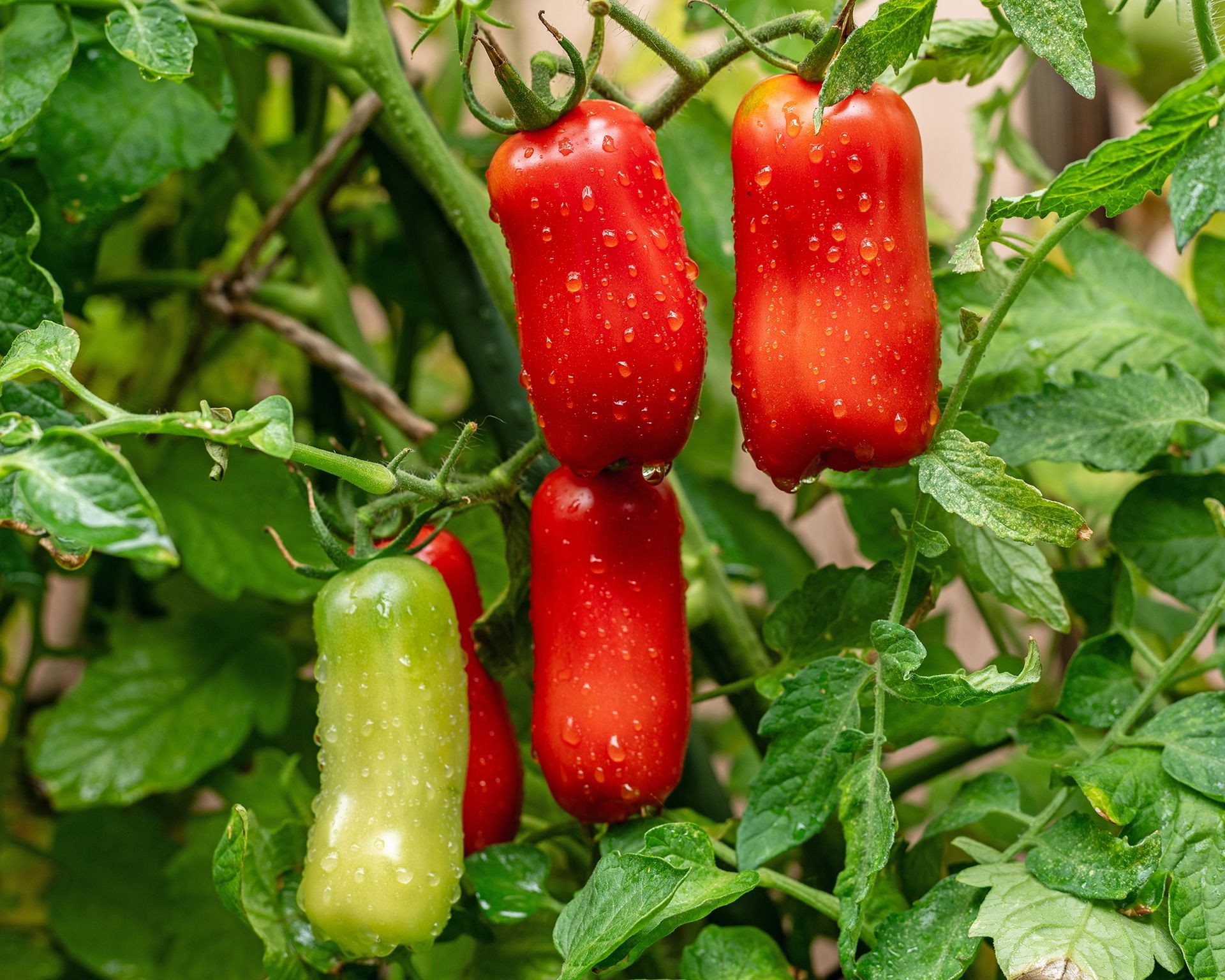 San Marzano tomatoes growing on the vine
San Marzano tomatoes growing on the vine
Pole Beans
Among our favorite heat-performing crops are yard long beans, also known as Chinese long beans. These remarkable beans can reach lengths of up to 3 feet (0.9 m). They are incredibly prolific producers even under intense heat, offering a continuous supply of tender, flavorful beans. We often plant both red and green varieties for visual interest and a slight variation in texture.
Another excellent heat and humidity-tolerant choice are rattlesnake beans. Their distinctive markings and robust growth make them a popular and reliable addition to any hot climate garden.
Summer Squash
Summer squash, including varieties like zucchini and yellow squash, are relatively forgiving compared to tomatoes. While zucchini can sometimes slow down production in the hottest parts of summer, straightneck and crookneck yellow squash varieties tend to perform consistently well. We often use them as companion plants alongside beans, utilizing space efficiently in raised beds. Finding specific heat-suited cultivars is less critical for squash, as many common types handle warmth admirably, provided they receive adequate water and nutrients.
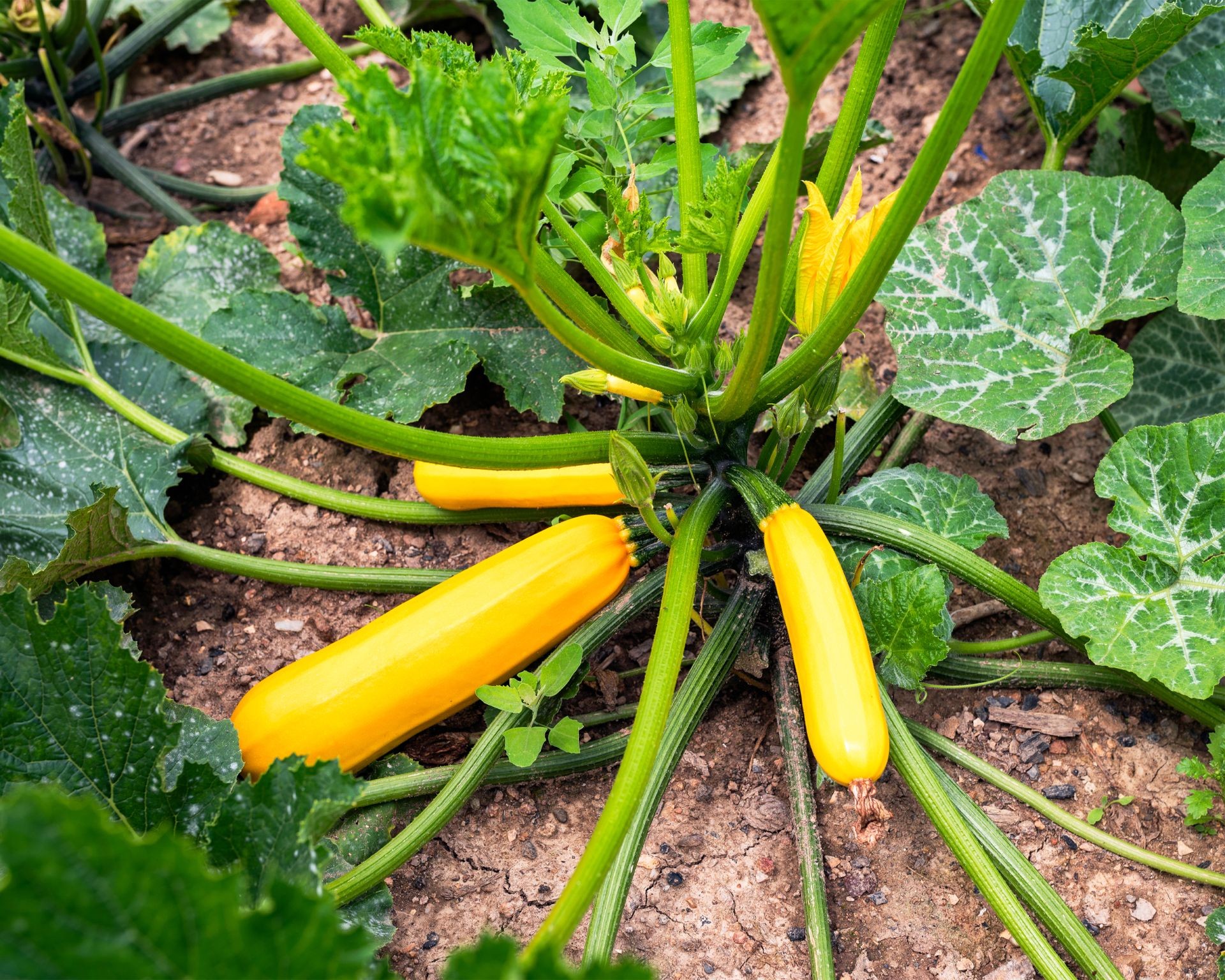 Summer squash growing in the garden
Summer squash growing in the garden
Peppers
Surprisingly, standard bell peppers can struggle in extreme heat, often failing to set fruit. However, this doesn’t mean hot climate gardeners can’t enjoy peppers! Most hot peppers and many sweet pepper varieties absolutely thrive in high temperatures.
Beyond popular choices like banana peppers, jalapeños, and shishitos (which are incredibly versatile and worth growing multiple types!), varieties like Gypsy and pimento peppers are excellent, tasty options that tolerate heat much better than traditional bells. Focus on these heat-loving cousins for a bountiful pepper harvest.
Tomatillos
For gardeners looking to try something a bit different, tomatillos are a fantastic, heat-tolerant option. They share similar growing habits and susceptibility to pests as tomatoes but offer a unique tangy flavor encased in a papery husk. Remember, you’ll need at least two plants for successful pollination and fruit set.
Tomatillos can be started from transplants or seeds sown indoors about 6-8 weeks before the last frost. Direct sowing is also possible once the risk of frost has passed and soil temperatures warm up. Recommended varieties like ‘Pineapple’ or ‘Grande Rio Verde’ are known for their reliability. Harvest when the fruit is firm and fills the husk, typically while they are still green, though some can mature to yellow for a sweeter flavor.
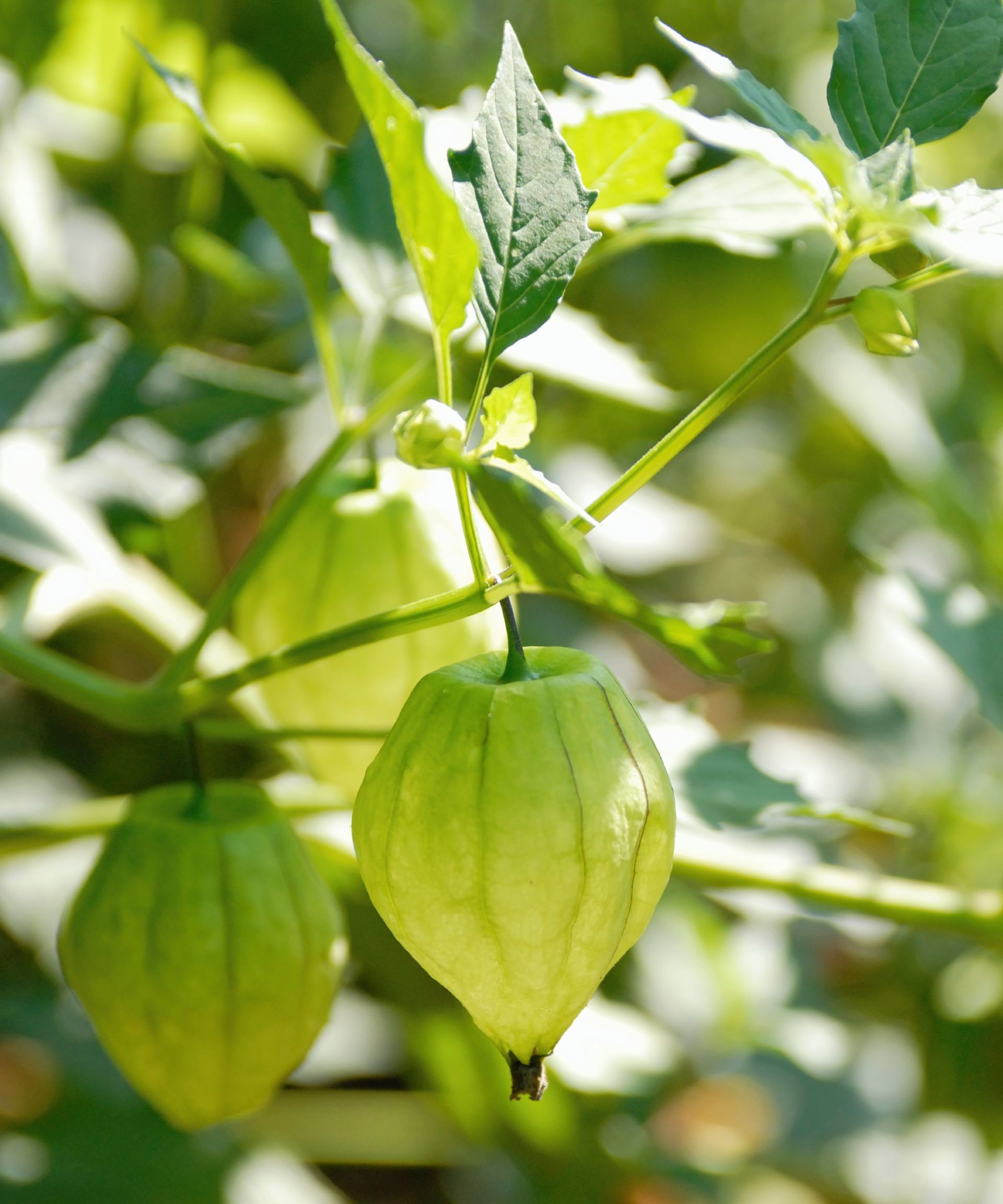 Close up of tomatillo fruits on a plant
Close up of tomatillo fruits on a plant
Melons
Melons are synonymous with summer and heat, making them a perfect fit for warm climates. Watermelons, cantaloupes, and honeydews all require significant heat to mature and sweeten. The main requirements are high temperatures and plenty of space, as their vines will spread extensively.
Providing melons with rich, weed-free, sandy-loam soil and consistent moisture is key. With these conditions met, the heat will do the rest, yielding juicy, refreshing fruits that are the ultimate reward for a hot-weather garden.
Okra
A true icon of Southern cuisine, okra is one of the most heat-loving vegetables you can grow. Originating from tropical Africa, it thrives in the conditions many other plants wilt under. In fact, the hotter it gets, the more okra you’re likely to harvest!
Choosing a variety is the main decision. ‘Clemson Spineless’ is a popular, reliable producer, often eaten raw right from the plant. ‘Alabama Red’ produces thick, meaty pods fantastic for frying. For a beautiful visual touch and delicious results, ‘Red Burgundy’ okra is recommended, though it’s best harvested before pods exceed 6 inches (15.2 cm) for optimal tenderness. ‘Cowhorn’ is an heirloom known for staying tender even up to 10 inches (25.4 cm), making it excellent for pickling. Ensure adequate spacing, about 12 inches (31 cm) between plants, for good air circulation and growth. Pods are typically ready for harvest about two months after planting.
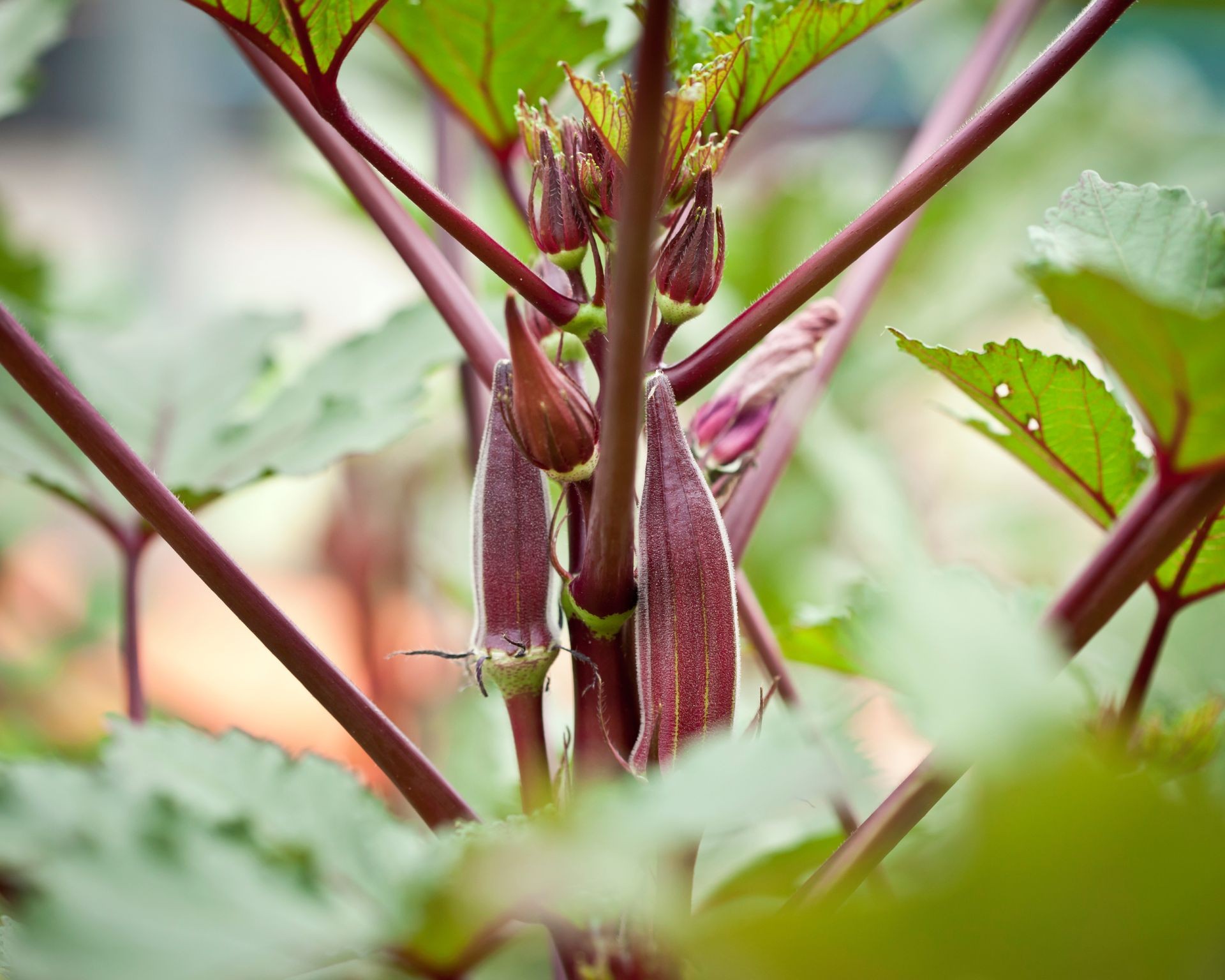 Close up of red okra pods growing
Close up of red okra pods growing
Eggplants
Eggplants are heat enthusiasts, requiring full sun and fertile soil to reach their potential. They also need consistent moisture, ideally about an inch (2.5 cm) of water per week from rain or irrigation. These relatives of the tomato love the summer heat and humidity.
For gardeners in hot climates, larger-fruited varieties often perform best. ‘Blackbell Classic,’ ‘Midnight,’ and ‘Florida High Bush’ are examples of cultivars particularly well-adapted to summer heat. Harvest eggplants before they reach full maturity for the best texture and flavor, as they are best consumed fresh and don’t store as well as some other vegetables.
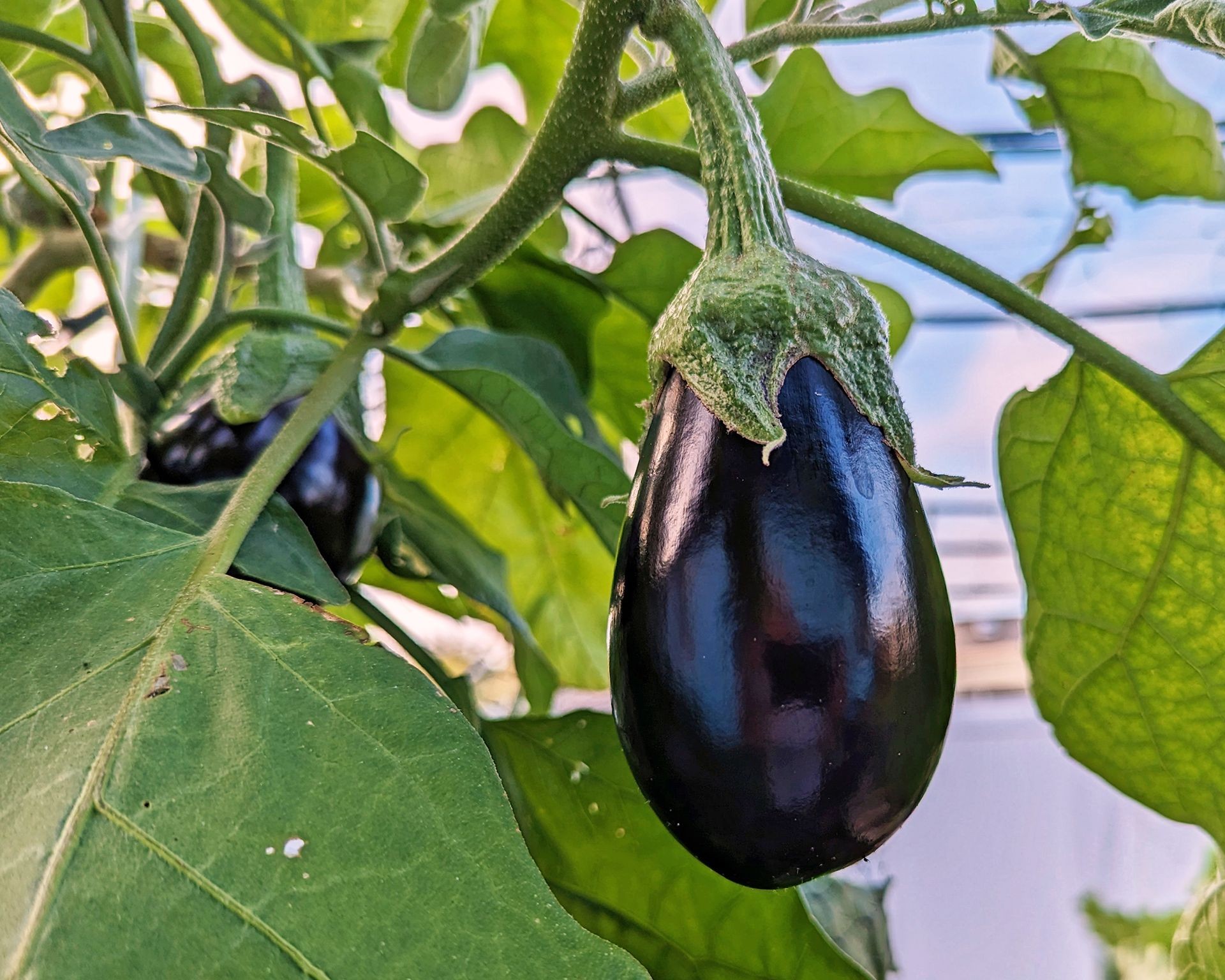 Eggplant growing on vine
Eggplant growing on vine
Cucumbers
Cucumbers grow optimally in temperatures between 80 and 85°F (26-29°C), making them well-suited for warm climate vegetable gardens. While many varieties tolerate heat, some are bred specifically for enhanced performance under high temperatures.
For slicing cucumbers, heat-tolerant cultivars like ‘Sweet Success’ and ‘Straight Eight’ are excellent choices. If you’re looking for varieties perfect for pickling, consider ‘Eureka’ or ‘Boston Pickling’. Ensuring consistent moisture is vital for preventing bitter fruit in hot conditions.
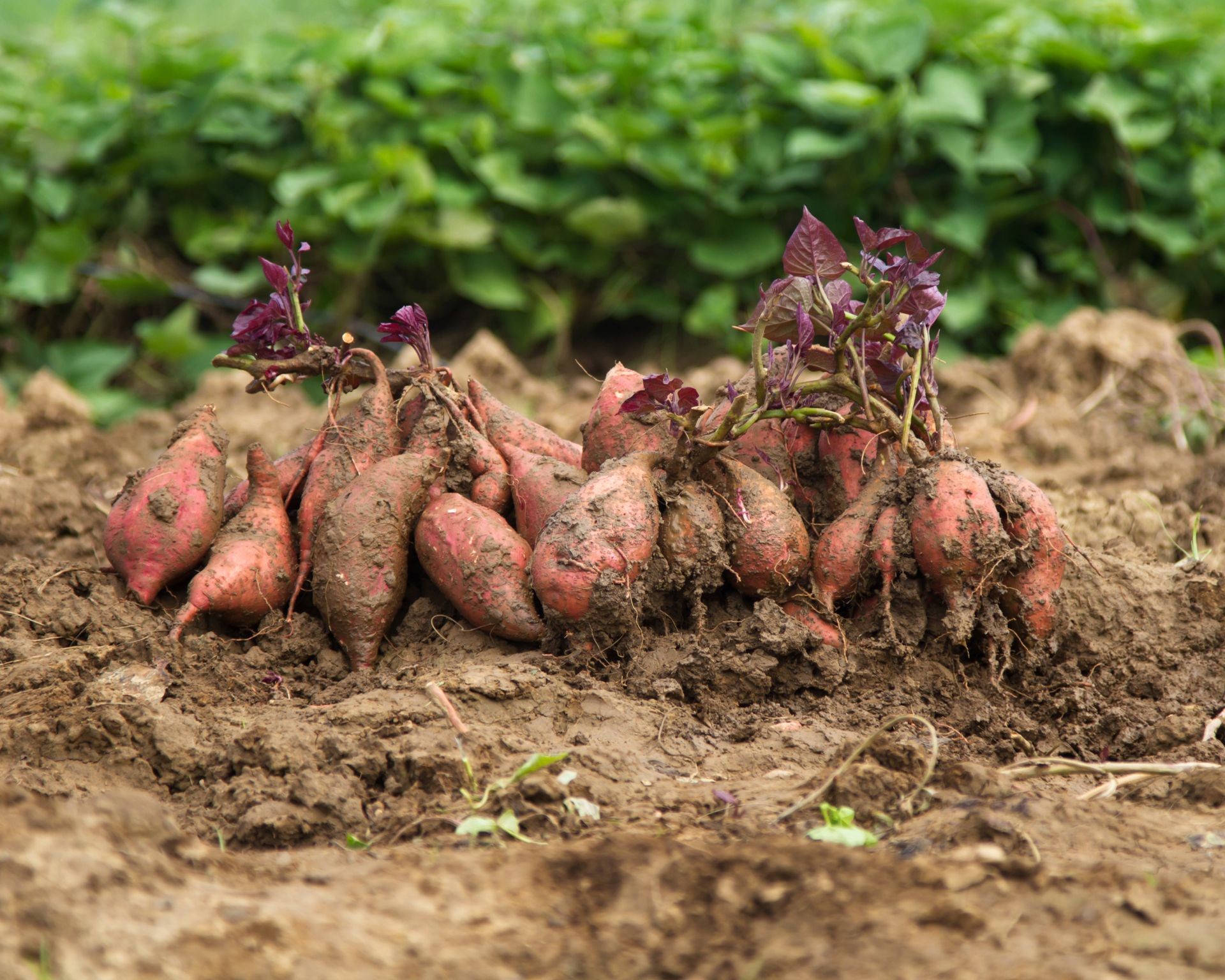 Harvested sweet potatoes in the garden
Harvested sweet potatoes in the garden
Sweet Potatoes
Unlike many root vegetables that prefer cooler soil, sweet potatoes thrive in warmth, making them an ideal crop for hot climates. Planting sweet potato slips once the soil consistently reaches 70-80°F (21-26°C) is recommended. Many varieties are ready to harvest in just six weeks, providing a quick turnaround for delicious tubers perfect for baking, pies, or fries.
‘Centennial’ is a widely recommended, easy-to-grow cultivar known for its performance in hot weather. For gardeners with limited space, ‘Vardaman’ is a bush-type sweet potato offering a more compact growth habit without sacrificing yield.
Adding Beauty and Balance: Best Companion Flowers for Your Hot Garden
Integrating flowers into your vegetable and fruit garden isn’t just about aesthetics; it’s a strategic move that benefits your entire ecosystem. Flowers attract crucial pollinators like bees and butterflies, essential for setting fruit on many crops. Many also help deter common garden pests. Here are some heat-tolerant flowers our Biogarden.Asia experts frequently incorporate into warm-climate gardens:
Marigolds
We consider marigolds indispensable in our hot climate gardens, especially when growing okra. Okra is highly susceptible to aphids, and year after year, these pests seem to find their way to the plants. Marigolds act as a natural defense, not only by potentially repelling some pests directly but, more importantly, by attracting beneficial insects like ladybugs, which are voracious aphid predators. They are also known to help deter squash vine borers. ‘Sparky French’ is a particularly vigorous and reliable cultivar that performs wonderfully in heat.
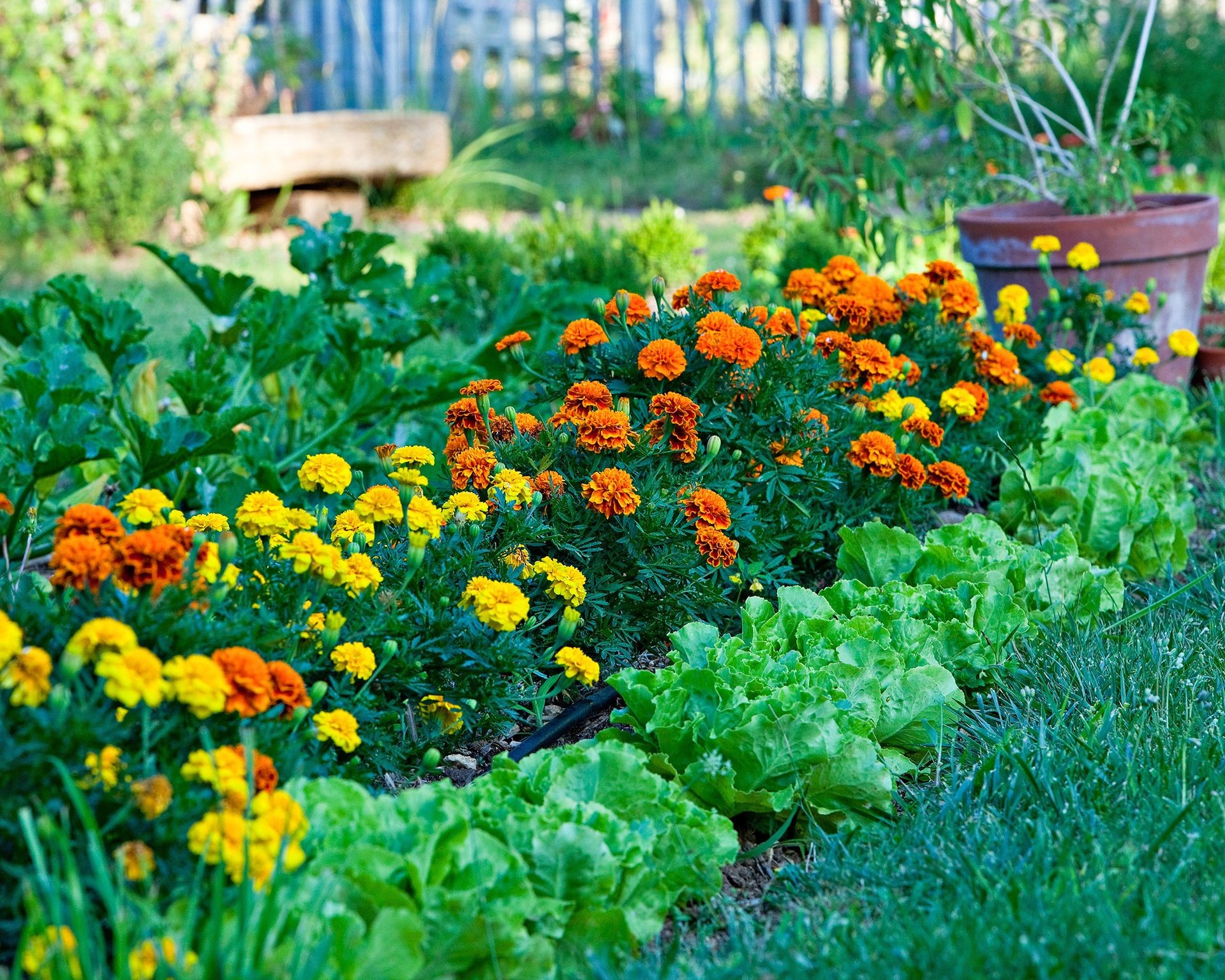 Marigolds planted next to lettuces as companion plants in vegetable garden
Marigolds planted next to lettuces as companion plants in vegetable garden
Lantana
Few flowering plants can withstand intense heat as well as lantana. While grown as annuals in cooler regions, they can become reliable perennials in warmer zones, adding continuous color through the hottest months. Despite their delicate appearance, lantana plants are incredibly tough and drought-tolerant once established, making them a vibrant and low-maintenance addition to garden beds.
Sunflowers
Adding sunflowers provides striking height and color to any garden while serving as a magnet for pollinators. ‘Torch’ Mexican sunflowers, with their fiery orange petals, are a favorite at Biogarden.Asia. These multi-stemmed giants can reach heights of 5-7 feet (1.5-2.1 m), creating a dramatic backdrop and providing abundant nectar for butterflies and bees.
Zinnias
If you want flowers that provide a burst of color throughout a long, hot summer, look no further than zinnias. Native to Mexico, they are perfectly adapted to withstand heat and humidity. Zinnias are prolific bloomers, lasting for weeks and weeks. With numerous species and cultivars available in a dazzling array of colors and forms, it’s easy to find the perfect zinnia to complement your heat-loving vegetable patch.
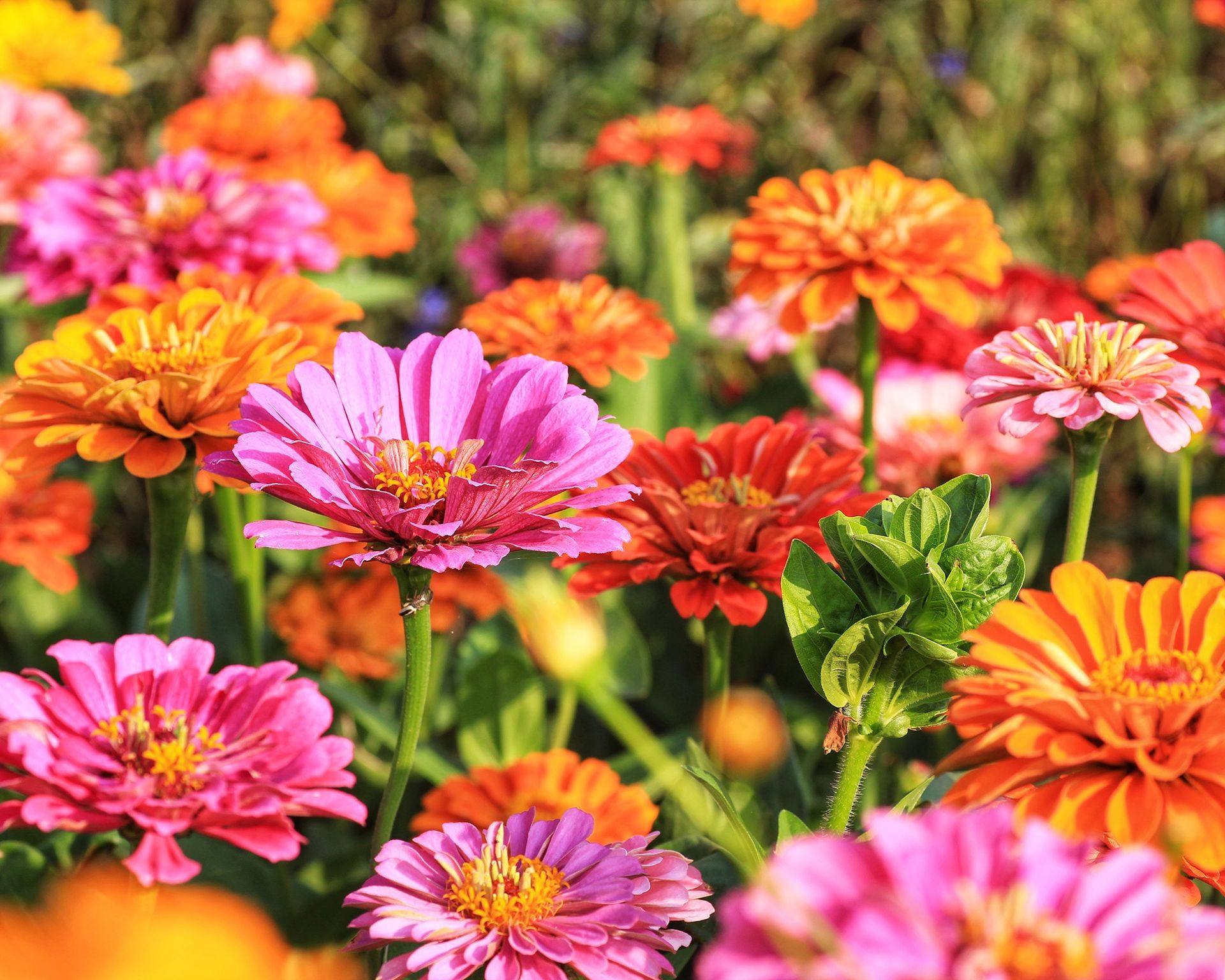 Red, orange, and pink zinnia flowers
Red, orange, and pink zinnia flowers
Cultivating Success in the Heat
Gardening in hot and humid climates offers the potential for incredibly long and abundant growing seasons. By understanding the specific challenges and opportunities, and by selecting plant varieties specifically bred or known for their ability to tolerate and thrive in heat, you can ensure your garden remains productive and beautiful even during the peak of summer. Focusing on heat-tolerant vegetables, fruits, and strategically incorporating beneficial flowers will reward your efforts with a bountiful harvest season after season. Explore the possibilities and embrace the warmth!



